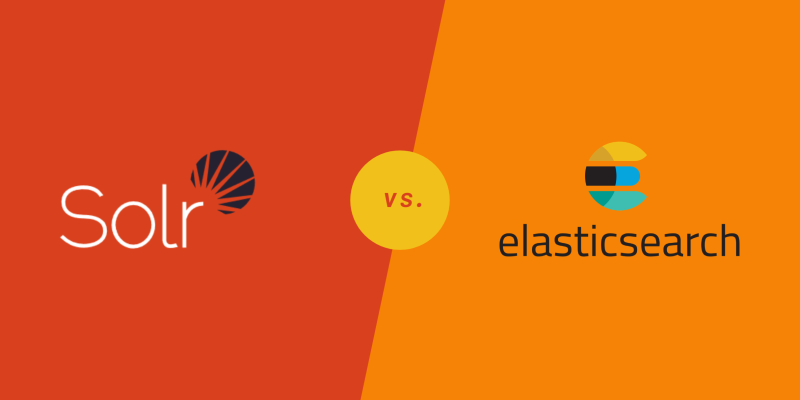Searches are an important and integral part of every app. When speed, performance, and high availability are basic requirements, searching through terabytes and petabytes of data can be hard.
This is why you use a search engine like Solr or Elasticsearch to deal with these problems. If you’re looking to add Apache Solr to your organization’s technology stack, hire apache Solr developers can help you achieve this goal.
A quick contras
Solr and Elasticsearch, two of the most popular and widely used open-source search engines, were compared to help people choose the best one for their needs.
On the one hand, Solr is better at dealing with static data because it has a cache and can sort things like e-commerce with a non-inverted reader. On the other hand, Elasticsearch is better suited for time-series data use cases, such as record analysis, and is used much more often in these situations.
Elasticsearch
Elasticsearch is a distributed RESTful search and analytics engine that can handle a growing number of use cases.
It gives you a distributed full-text search engine with an HTTP web interface (rest) and schema-less JSON documents that multiple tenants can use. JavaScript, Java, PHP, Groovy,.NET, Ruby, Perl, and Python all have official client libraries for elastic search.
Search engines have indexes broken up into pieces, and each piece can have more than one copy. There can be one or more fragments on each Elasticsearch node. Your engine also coordinates, ensuring tasks are given to the right pieces.
Elasticsearch can search in almost real-time. One of its most important features is that more than one person can use it. Other important features are:
- Spread out search
- Multiple lease period
- Several parsers
- Using a quick search
- Aggregation of groups
- Aggregation of groups
Solr
Solr has been used in search engines since 2006, so it is a tried-and-true product with a large and strong user base. Solr has failover, distributed reindexing, load balancing, and retrieval queries.
It can become a reliable, scalable, and error-tolerant search engine if it is managed well. Solr is used by many of the biggest websites on the Internet, like Netflix, eBay, Instagram, and Amazon (Cloud Search), because it can index and search many websites simultaneously.
On the list of important features are:
Functions of NoSQL and effective document handling (e.g., words and PDF files).
- Highlighting
- Multiple search arrays
- Indexing in real-time
- Search the whole text
- Grouping that changes
- Integration of databases
- Installation and setting up
Before installing either engine, you need to have Java, but Elasticsearch’s default configuration needs 1 GB of HEAP memory. The JVM.options file in the configuration directory can be changed to change this.
Solr needs at least 512 MB of HEAP memory to allocate instances by default. You can change this setting in the Solr script file or the solr.in.cmd. Both of these files are in the bin directory of the Solr installation.
Elasticsearch is easy to set up and install but harder to use than Solr. Elasticsearch configuration files are written in YML, while Solr configuration files are written in XML.
Searching and indexing
Solr and Elasticsearch write indexes in Lucene, but their files and architectures differ because of fragmentation and replication differences, among other things. Elasticsearch also has built-in DSL support, while Solr has a strong standard query parser that matches the syntax of Lucene.
Scalability and Getting the Word Out
Search engines have to quickly handle large amounts of data and complex queries on sets of hundreds of millions of records.
Sometimes, these queries can use up so many resources that the whole system goes down. This is especially true if you have yet to plan for the load ahead of time and can’t quickly scale. Because of this, a search engine must be built to grow and handle problems.
Clusters, splitting up, and rebalancing
Elasticsearch and Solr support fragmentation, but Elasticsearch has better support for scaling and cluster management because its design considers horizontal scaling.
Its downside is that once fragments are created, they can’t be made bigger. However, you can use a shrink API to remove fragments from an index. Solr lets you split an existing fragment into more pieces, but not the other way around.
Community
Both the Solr and Elasticsearch communities are very busy. If you look at Github, you can see that most of them are open-source projects that have been released many times.
Even though both are open source and have the Apache licence, it is important to know that they work in different ways. Solr is open source, meaning anyone can help and add to it. This means that it can be accepted if you need a feature and make a good contribution to the community.
Technically, Elasticsearch is open source, but not all of it is. The source code is available to all contributors; users can make changes and add to them. But Elastic employees must agree on the final changes (the company that runs Elasticsearch).
So Elasticsearch is more driven by a single company than a whole group of people. This doesn’t even count the number of premium features that Elasticsearch (and the Elastic/ELK Stack in general) offer that are open to some.
Documentation:
When it comes to documentation, Elasticsearch wins. Because Elasticsearch is so popular, not only does its official website have well-organized, high-quality documentation with clear examples, but the Internet is also full of books and guides.
In the past four years, Elasticsearch has worked on its documentation to make it more than just organized. It also has good examples and clear instructions for setting it up.
organized, there needs to be more documentation for Solr. Solr APIs need to be better covered in general, and it is hard to find good technical examples and tutorials.
Solr used to be the product with the best documentation, with clear examples and contexts for API use cases. But its documentation needs to be kept up to date, and many users have noticed gaps.
Conclusion
Do hire Apache Solr developers, as they can help you leverage the full potential of Apache Solr, so you can gain actionable insights from your data and make better-informed business decisions.
To find the right Apache Solr developer for your organization, look for candidates with strong search engine optimization, data analysis, and software development skills.
Read More: What language does Solr use?









Comments